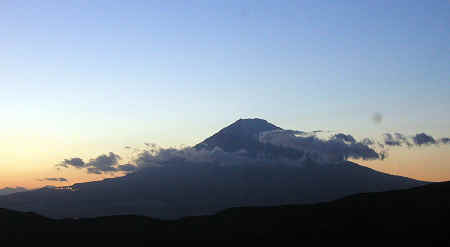
Japan in Autumn
Harlan Hague
I would soon know. I collaborated on putting together a group of Americans and Australians for a tour that emphasized the countryside, small towns, culture and tradition. I scheduled the tour at the peak of autumn color and prayed for a normal year. Our accommodation would be a mix of western and traditional Japanese inns. I booked the tour with Destination Management, an Australian company that had considerable experience in offering the sort of tour that I had in mind. Amazingly, after the passage of decades, I recognized the Yokosuka station and, after stepping outside, remembered the layout of the town between the station and naval base, though the waterfront and the whole look of the town had changed. We met our guide at the gate, and we were off. I had arranged for a visit by email. Our guide, Keiichi Adachi, an employee on the base, was most helpful and showed me everything I wanted to see, the familiar and the inevitable new construction that filled the spaces that had been open and windswept when I worked here. Walking back to the train station, Carol and I lingered among the roses on the seaside promenade. On the train for Tokyo I sat beside a Japanese woman who was reading a large book in English. It was Harry Potter and the Goblet of Fire. Now I am a Harry Potter zealot, and I couldn’t help but strike up a conversation. She said that she had read the first three volumes in Japanese, but friends said that too much is lost in translation and urged her to read the fourth volume in English. It was a struggle, she said, and added that she was enjoying it immensely. I complimented her on her English pronunciation and grammar and asked whether she had chances to speak English often. She said that she did not but took every opportunity to do so, adding that she had quite a lot of trouble with accents. I replied that we have many different accents in the United States. “No, no” she said, “I mean Australian accent.” I would have to remember that for the tour group. Our Australian guides had already commented good-naturedly about American accents. We gathered in the hotel lobby that evening for introductions and indoctrination by Ken Osetroff and Mayumi Gray, our guides. Ken is also the owner of Destination Management, the company that handled arrangements. Leaving the shrine, we went by train to the moated Imperial Palace East Garden. We enjoyed the pleasant gardens and ponds, marveled at the massive stone walls and walked among the remains of the shogun’s castle. Most of the 270-acre palace grounds of forests, gardens and buildings of the imperial household is closed to the public. Continuing, we visited the Edo-Tokyo Museum, which includes displays illustrating 400 years of Edo-Tokyo history. A faithful reproduction of a segment of the Nihonbashi bridge is fascinating. Our group gathered that evening in a restaurant near the hotel for a welcome dinner. We were on an upper floor with a beautiful view of nighttime Tokyo. We sat on the floor at low tables with our legs in a trough under the tables. Everyone was delighted. This is not bad at all, a member said. Some group members had expressed concern about sitting on the floor at meals. During the tour, we had a number of traditional Japanese meals, which meant sitting on the floor. This was the only time we would have the floor trough. At first light the next day I drew the curtains from our hotel room on an upper floor. It was a crisp clear day, and there between tall buildings rising on all sides, was Mount Fuji on the horizon. What a spectacular, rare sight! It was a good omen. We were off early for Nikko. Slowly, slowly. Nikko is particularly popular in autumn, and it seems that every fourth Japanese in the country was heading in the same direction. The freeways and roads were clogged, and our precious time ticked away. The countryside was interesting from our creeping bus, but it would have been just as enjoyable at a faster pace. We arrived in Nikko later than anticipated, but the visit to the marvelous Toshogu complex quickly erased my anxiety. The forty-two structures, some designated national treasures and most ornamented with carvings, comprise one of the most important temples in Japan. The carvings include the little Sleeping Cat and the Three Monkeys of see-, hear-, and speak-no-evil fame. As evening approached, we drove higher in the mountains, crawling up the switchback road, crowded with vehicles of all sorts, to Lake Chuzenji. The day was cold and overcast, the waters of the lake dark and white-capped. The forests on the surrounding hills showed layers of green conifers and the autumn colors of deciduous trees, soft shades of yellow and orange and brilliant reds. We returned to our coach and drove to the viewpoint above Kegon Waterfall. The leafy color in the gorge was magnificent. Afterwards, we boarded our coach, grateful for the warmth inside. Our hotel that night was a traditional spa hotel where most of us had our first experience in a public hot bath, most relaxing after a long day. Dinner was traditional Japanese, served Japanese style. The next morning, we set off on another long travel day. At once, we were stalled in heavy traffic. Not until later did I discover that the train from Tokyo to Nikko was but 101 minutes, which would have been a time saver, assuming bus transport could be arranged at Nikko. Noted. In spite of the traffic delays, it was an interesting day, stopping occasionally at huge rest stop complexes, where we picked up picnic lunch, shopped for souvenirs, and drew free green tea from dispensers. Carol and I sat on a bench, drinking our tea. Carol looked quizzically at a sort of pear-shaped ceramic cooker. The woman tending it took the cover off, took out a steaming sweet potato and gave it to her. I tried to pay her but she waved me off with a smile. It was delicious. Finally leaving our bus, we traveled by train, inclined railway,
switch back railway and
We enjoyed bathing outdoors in the spa's thermal baths. Most refreshing. Fuji was visible from the ladies’ bath. On one evening, some of our female members were invited to enjoy sake in the bath. The party, I’m told, was hilarious. The lobby of the hotel was decorated for Halloween, with signage in English. Members of our group were the only westerners in the rather large hotel. One morning we took the ropeway to Owakudani to observe the steam and sulfur vents and bubbling pools of the extensive geothermal area. Alas, we had to be content to view them from a distance. Just as we arrived, authorities closed the area due to the dangerous release of poisonous gasses. Disappointing, but I’m glad they closed the gates before we were well into the walkways in the noxious complex. In the afternoon, we took the ropeway down to Lake Ashi where we boarded a “pirate ship” pleasure boat, loaded with uniformed students and a few adults. Disembarking at the far end of the lake, we walked along the shore on the storied Tokaido Trail, once the principal artery connecting Kyoto and Edo, the ancient name of Tokyo. Four-hundred-year-old Cryptomeria trees and deciduous trees rich in autumn colors shaded the path. Leaving Hakone, we drove above tree line on Mt. Fuji for a close-up. The view of Fuji at the top of the drive, which ended at a collection of small shopping and refreshment establishments, is not memorable. But turn around. The distant view of the hills and valleys, often enshrouded in cloud, is magnificent. Descending, we stopped for a look at Matsumoto Castle, the oldest wooden castle in the country. Circled by a moat, the white structure is dramatic. Regrettably, there was no time to go inside. Farther along in the Japan Alps, we stopped at a lacquerware workshop and sales room. The demonstration was quite interesting, but unfortunately consumed less time than that spent in the salesroom. This night and the next day were high points of the trip for me. We went about as far into traditional Japan as one can go today. We got down from our bus at the bottom of tiny Otsumago village in the heavily forested Kiso Valley. The old Nakasendo Trail, an important trade route connecting Kyoto and Edo, runs right through the middle of the tiny village of carefully preserved houses. Our accommodation was a minshuku, a family-owned traditional inn. We had already become familiar with sleeping on the floor on futons and sitting on the floor for meals. Here we enjoyed the communal sitting room with a fire pit in the middle of the tatami floor. Recently the nights had turned a bit colder, and the fire was most welcome. The only other guests were a young English couple and a young French couple and their adorable baby. I enjoyed talking with them at dinner. At dawn the next morning, I walked up the Nakasendo Trail above the village, then turned to look back over the valley. There was a heavy overcast, and low clouds obscured the tops of the hills that rose from the valley floor. The light mist moistened my face. I shivered, remembering mornings so many years ago. Mornings like this have had so much influence on Japanese literature and mentality. I made a mental note to read Snow Country again. After breakfast, we deposited our luggage on the bus and set out in the mist to walk to Tsumago. We passed farm buildings and fields. Even in the subdued grays of the overcast, autumn colored the countryside. We soon arrived in Tsumago. The light rain that was falling now did not dampen our spirits. Tsumago is a jewel. This was an important post town in the Meiji Period (1868-1912) on the Nakasendo Trail. It declined with the introduction of the railroad early in the twentieth century. Inhabitants moved away, and the village was virtually deserted. In retrospect, this was its salvation. In the 1960s, a movement swept Japan to preserve historical structures, and Tsumago, which had been sleeping over fifty years, was a beneficiary. Restoration began, and in 1976 the government designated the village a protected area. Today it is both a museum, with no intruding television antennas or telephone poles, and a town where people live and work. Farther along the Kiso Valley, we visited Magome, still in the Kiso Valley, also restored and worth a visit, but a bit more commercialized and modernized. Afterwards, we motored to Mino where we visited the workshop of one of the leading makers of washi, traditional handmade paper.
On an early morning, we took public transport to Kyoto Botanic Garden, a collection of traditional and modern plantings. I especially enjoyed talking with two men who were birding at a small garden pond. They proudly showed me pictures of local birds they had photographed at this spot. We returned to the hotel for a demonstration of a traditional tea ceremony. In the evening, we strolled down Pontocho, a narrow alley of chic small shops and expensive restaurants. Afterwards, some of us attended a performance of traditional dances and arts at the Gion Theater. Entertaining, but it will be enjoyed most by those who have never been exposed to Japanese drama, dance and ikebana. On one day we rode a combination of buses and vintage trains west of Kyoto to board wooden boats for a ride on the river that ran through the forested gorge of the Hozu River. Skilled boatmen worked the boat through the rapids and narrows to the landing at Arashiyama. Outside the town we walked through a towering bamboo forest. We were hard pressed to decide what to do during our free time in Kyoto. There were so many options. Carol and I spent a very enjoyable afternoon, strolling in the Gion geisha district. After a light supper, we walked at dusk in the Chion-in Temple to see the illuminated lanterns, then walked back to the hotel. We stopped at a shop where I took a picture of Carol standing beside a large advertising board, featuring a life-size picture of Ichiro Suzuki, star player for the Seattle Mariners. The picture was for Carol’s sister-in-law, a zealous supporter of the Mariners. More free time in Kyoto was consumed in small shops and at a larger shopping complex where I found some superb reproductions of Hiroshige’s Tokaido woodblocks. I bought my two favorites. Teramachi street, with its wall-to-wall shops and massed humanity, was a waste of precious time. We walked a hundred yards on the Philosopher’s Path, and I wish I had spent a half-day on it. The fall color was wonderful. I understand that the path is magnificent when the cherry trees are in bloom. And there were still gardens, temples and shrines yet to be visited. Next time. Leaving Kyoto, we began using our seven-day rail passes. We boarded
the Shinkansen, the Bullet Train, for the first time. Each of us had packed a carryon bag
for a two-day journey, our large bags being transported by truck to another Our first stop was the city of Himeji. Storing our bags in lockers in the station, we walked to the castle. The wonderful white stone castle is the most impressive extant medieval castle in Japan. Every step revealed another view. Short on time, a number of us nevertheless were determined to go inside. Carol and I puffed and panted up stairs, along corridors and up turrets, to the top floor. Every level deserved a half hour, but alas we had no time to spare. It is a marvelous castle, not to be missed, outside and inside. Schedule a half day. Returning to the station, we retrieved our luggage, boarded the train and rode to Okayama. Here we walked in Korakuen, one of Japan’s most famous stroll gardens, the masterpiece of warlord Ikeda in 1686. Teahouses are scattered about the grounds, which include large lawns and small fields of growing tea, rice and wheat. I stepped from the path into a grove of bamboo at a small spring and was alone. I sat and watched scores of small birds flitting about overhead. So often in crowded Japan, one can turn a corner and find complete and precious solitude. We returned to the train station, picked up our checked luggage, and rode to Kurashiki. Our hotel was in the old district, which had the appearance of a village. Carol and I walked before dinner. There were but few people out. The narrow streets, running alongside a stone-lined canal, were lined with small shops and museums. It was dusk, with a heavy overcast, and quiet, causing a melancholy, a bit sad, a bit thoughtful, that I still associate with Japan. All was neat and clean. This was not just typical of places frequented by tourists. I was profoundly impressed with the cleanliness of Japan, everywhere we went, either with the tour or down side streets and alleys in free time. The next morning we rode the train across the Seto Ohashi Bridge to Shikoku. Arriving, we stepped off the train, turned around and boarded the train for the return to the mainland. We had been scheduled to visit Ritsurin, a popular stroll garden, but this was scratched to save members’ energy and time for other attractions. The time might have been better spent in Kurashiki or other destinations of the day. Our next stop was Hiroshima where we saw the Peace Memorial and the
Atomic Bomb Museum. Some of our members stopped and signed peace petitions that were
circulated by school children. Uniformed From Hiroshima we took the train, then the ferry to the island of Miyajima, one of Japan’s foremost scenic spots. It was dusk as we approached. The hills, rising sharply from the bay and softened by a low thin cloud, overlooked the famous red torii with its feet in the sea. We found our hotel, then walked in the growing darkness toward the illuminated torii. I was profoundly moved by its beauty and serenity. The present gate, built in 1874, is the latest in a series that have inspired visitors for seven centuries. We returned next morning to view the torii. The tide was out, and the base was exposed. A few walkers strolled on the hard-packed sand. We continued to the Itsukushima-jinga shrine where we walked with hundreds of other visitors, mostly uniformed school children, on the wooden walkways and platforms. When the tide is in, the shrine appears to float on the shallow waters of the bay. Carol and I continued beyond the shrine and walked along the coast. At every step, a different view of the torii, through pine boughs and above the sandy beach, stopped us in our tracks. Leaving Miyajima the next morning, we returned to the mainland by ferry and traveled by train to the mountain village of Tsuwano. Leaving our bags in station lockers, we visited an old sake brewery. Afterwards, we walked in the narrow lane of shops, stopping to watch the colorful koi in the stone waterway alongside the road. At the bottom of the road, koi swam in the shallow stream bordered by reeds. A gray heron watched the huge fish hungrily. Fat chance, I thought. I turned away and immediately heard a woman behind me shouting excitedly, pointing toward the stream. There stood the heron, its neck bulging where it had swallowed a foot-long carp. The next morning was a rare treat, a highlight of our trip. We bussed to the Tsuwano Taikodani Imari Shrine on a hillside overlooking the town. Here we were treated to a personal service and blessing. After the members of the group were outfitted in ceremonial vests and given a traditional greeting, Mayumi “volunteered” me to participate, and I was doubly blessed. It was a moving, humbling experience. The service ended with warm sake. Each of us was given a gift of an exquisite pottery cup. Leaving the temple, we stood in the light rain, enjoying the extensive view of the valley below. Some of us walked down the switchbacks, literally roofed by a thousand red wooden toriis, financed by the contributions of private individuals. The reds and golds of the trees along the path were even more brilliant. At the bottom, we were met by good-natured grumbling of some who had not come down the torii path. I had thought the earlier plan not to come down the path had changed. My apology was feeble indeed. After driving a short while, we stopped in a village and walked up a lane to visit a traditional washi paper maker’s workshop. The demonstration was most interesting. In the afternoon we continued our journey by bus toward the historic pottery town of Hagi. At the mountain pass, we were delighted to find the land and trees dusted with a light snow. We stopped and stood on the roadside, enjoying the unexpected spectacle. Then back on the bus. In Hagi, we visited a sake brewery and a traditional pottery workshop, then looked into some of the shops specializing in the fine—and expensive--pottery products of the town’s 100 kilns. I learned that the gift cup that we received at the Tsuwano shrine was the product of a noted Hagi manufacturer. From Hagi, we drove to the Tokoji Temple, the family temple of the Mori clan. The buildings of the complex, unpainted and weathered, are striking in their simplicity. The brilliant colors of autumn complemented the muted tones of the structures. The adjacent graveyard of the clan is lined by rows of 500 stone lanterns, dedicated to the Mori family soldiers. On the road again, we stopped briefly by the sea for pictures, then motored back to Tsuwano for the night. The next morning, we loaded aboard the train for Matsue on the shore of Lake Shinjiko, arriving about noon. We bought picnic supplies in the train station and walked to Matsue Castle where we lunched on the grounds. We toured a museum on the ground, then climbed to the top of the castle. Little was done over the centuries to modernize the structure, so the feeling is authentic. The view from the top is worth the climb. North of the castle we walked in the Shiominawate district, where samurai once built their homes. We visited the residence of Lafcadio Hearn, a Greek-American who lived in Japan in the early 1890s as a reporter for Harper’s Magazine. His observations on Japanese people and culture, reported in a number of books, are timeless and are still good reading. He is probably more popular in Japan than elsewhere. Just down the street from Hearn’s home is the best extant example of a samurai house. It was exceptionally well preserved and displayed. It is alone worth a trip to Matsue. There are three places that most Japanese want to see during their
lifetime: Miyajima, Matushita and Amanohashidate. We had seen Miyajima, and now the latter
was our destination. We took three trains in sequence and ended on a bus, arriving at our
hotel at dusk. We knew that we were leaving rather early in the morning, so some of us set
off in
The tour group broke up the next morning. We said our goodbyes at the hotel and train station. Some took an early train to Osaka for flights home. Others would leave later. Carol and I and three other couples took the train for Tokyo for flights the following day from Narita airport. I had made reservations for six of us at a ryokan in Narita City, about ten minutes by train from Narita airport. Our ryokan was not as grand as the accommodation during the tour. It was 100 years old, basic, and moderately priced. After settling in, we strolled down the main street and found a British-style pub for dinner. Afterwards, Carol and I stopped at an internet café while the others continued. Mistake. On leaving the café we took a wrong turn and soon found ourselves alone on a dark street that we did not recognize. I was not afraid—I found Japan the safest country I had visited in years—but it was late, and we needed to get to bed. A young woman walking a dog happened by, and I tried to ask directions. She spoke less English than I spoke Japanese, so our communication was nil. So she simply led us back to the street near our ryokan. This was typical of the willingness of Japanese people to help. Before returning to our ryokan, we walked through a deserted temple that we decided we would see the next morning. When we reached the ryokan, the owner was watching a baseball game on television between all-star teams from the United States and Japan. He particularly liked Barry Bonds. The Japanese team won. Next morning we walked in the woodlands and gardens of Naritasan Park and found some of the best scenery and autumn color of the entire trip. Afterwards, we walked in the nearby Naritasan Shinshoji Temple, a magnificent complex of halls and pagoda, revered as a place of pilgrimage. Returning to the town, we strolled the narrow winding main street and looked into some shops. By this time, I was watching the time. We returned to our ryokan to retrieve our luggage. The ryokan owner kindly drove us to the station. Narita City, only ten minutes by train from the airport, is worth a visit, either as part of an itinerary or as a delightful way to spend a long layover at Narita airport. This tour was everything I had expected, and more. The mix of traditional Japanese inns and spas and western-style hotels was exceptional, also the mix of Japanese and western cuisine. Japanese meals were especially interesting. The use of public transportation was a good idea and served as an interesting cultural experience. The tour was rewarding and, like every trip with a richness of choices, it was frustrating. We tried to do too much and ended by doing some things poorly. I would change some things if I were to do it again. I would investigate the possibility of taking the train between Tokyo and Nikko, if a bus could be hired at Nikko. I would cut the drive up Fuji and use the time gained to look inside Matsumoto Castle. I would spend another night at the minshuku in Otsumago. This would give some time to walk the trail above the village and simply enjoy the aura of old Japan at the inn. I would linger a few more hours at Tsumago, and I would try to schedule more short walks in the countryside. I would investigate whether western style hotels could offer a choice of western or Japanese rooms, and whether a smaller hotel could be booked in Kyoto. The Miyako is wonderful, and the service is excellent, but it is huge. Any alternative would have to be exceptional to replace it. I would eliminate the round-trip train ride to Shikoku and consider cutting Amanohashidate. While the itinerary, accommodation and other arrangements were a joint effort between Destination Management and myself, the few shortcomings can be traced largely to my carefully considered ignorance. I did not know well some of the destinations and transportation routes in our itinerary. Ken and Mayumi produced an excellent tour and then skillfully shepherded our group through eighteen crowded, thoroughly enjoyable days on subways and trains, city streets and country lanes without losing a single member. See Destination Management's web site. The writer will by happy to respond to questions by email. |
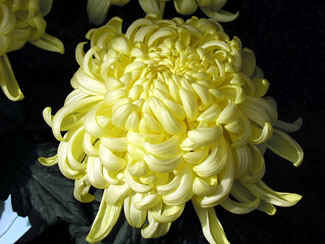
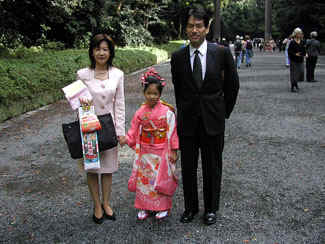
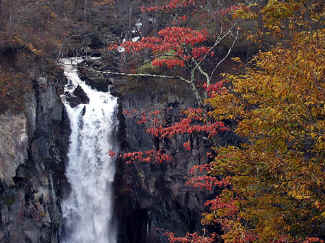
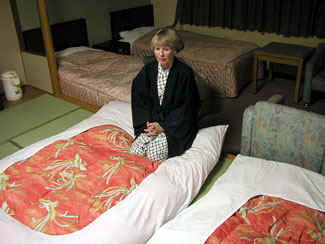
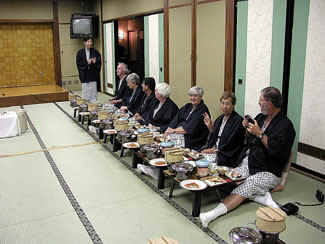
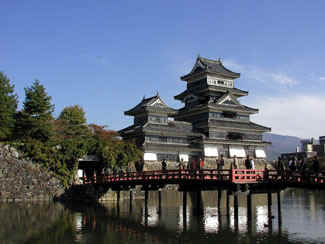
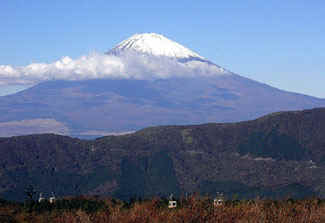
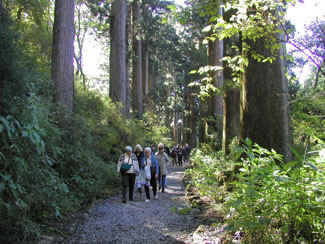
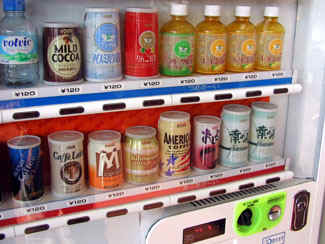
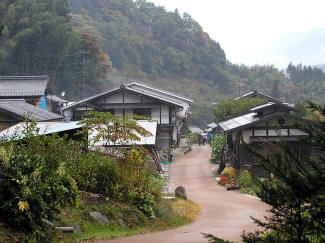
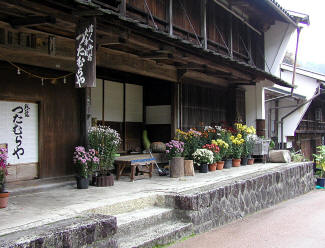
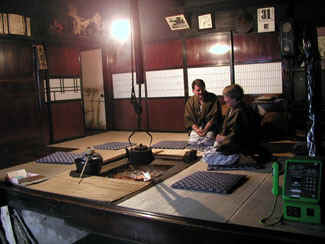
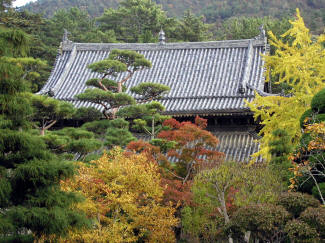
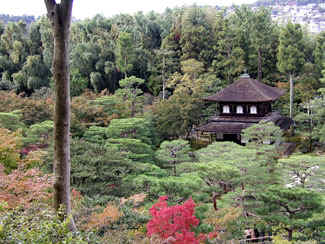
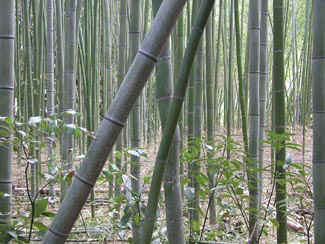
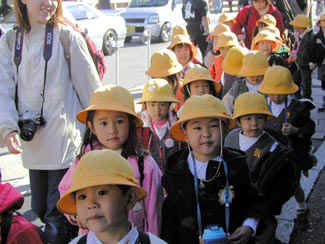
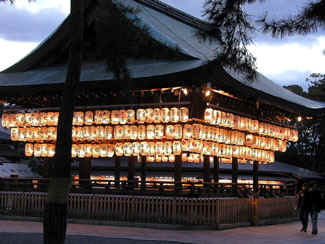
![Young woman (maiko? [apprentice geisha]), Kyoto](maikokyotoreduced.jpg)
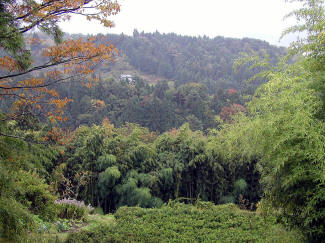
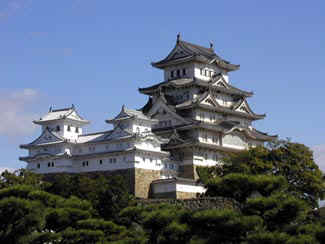
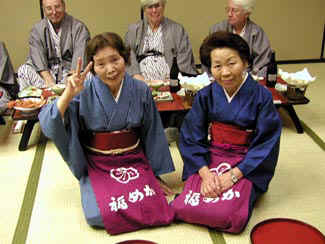
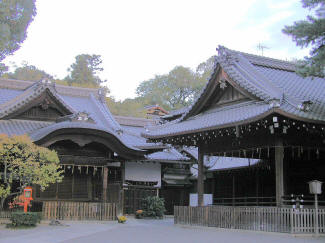
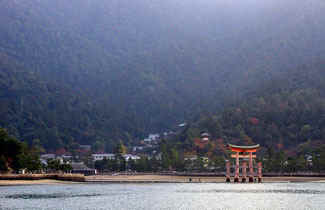
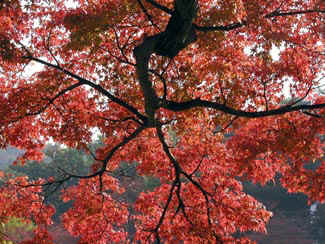
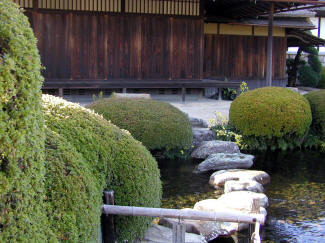
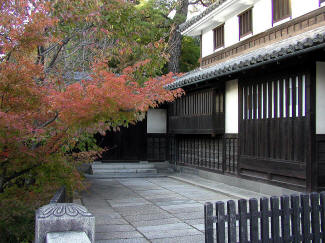
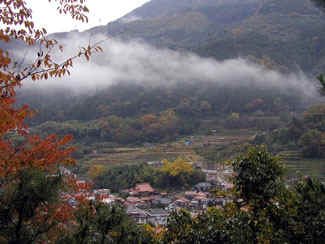
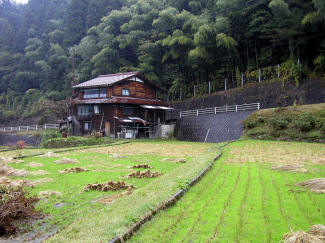
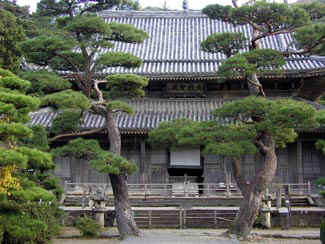
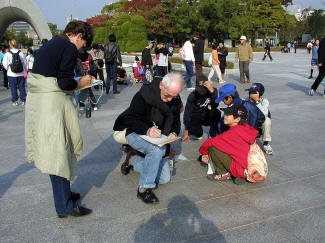
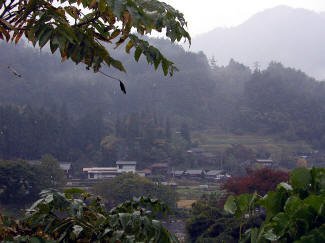
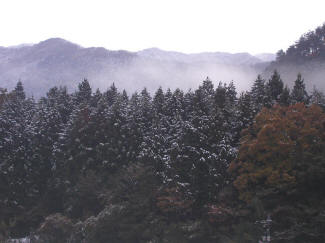
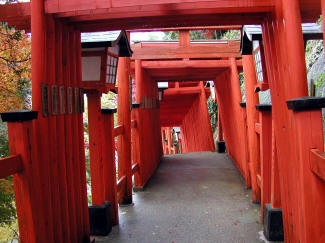
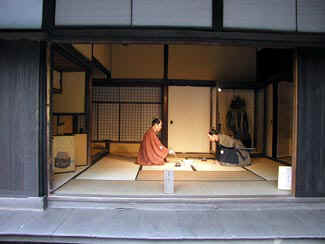
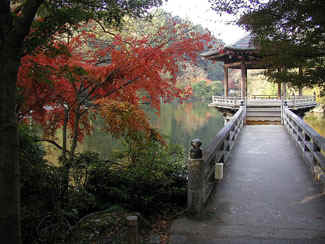
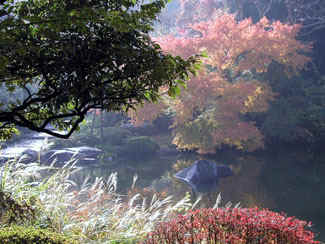
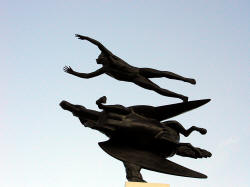 ropeway over the mountains in Hakone National Park, to our hotel.
Along the way, we stopped at the Hakone Open Air Museum, a collection of western and
Japanese modern statuary. Our hotel for the next two nights was a spa hotel. I stepped
outside on the first morning to a magnificent, clear view of Fuji. Comments by
Japanese guests confirmed that this was a rare sight.
ropeway over the mountains in Hakone National Park, to our hotel.
Along the way, we stopped at the Hakone Open Air Museum, a collection of western and
Japanese modern statuary. Our hotel for the next two nights was a spa hotel. I stepped
outside on the first morning to a magnificent, clear view of Fuji. Comments by
Japanese guests confirmed that this was a rare sight. 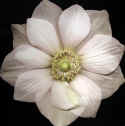 Leaving old Japan, we drove to
Kyoto, a happy blending of old Japan and modern Japan. Kyoto was a joy and a
disappointment. A joy because of its cultural riches, a disappointment because of its
cultural riches. We were in Kyoto five days, but it simply was not enough time to do more
than sample its cultural and historical treasures. We visited temples and gardens, notably
Ryoan-ji, where I particularly enjoyed seeing again the Zen dry landscape garden. We
walked in the gardens at Ginkaku-ji (Silver Pavilion) and saw the wooden marvel of
Kiyomizu Temple and, in Nara, Todai-ji Temple, housing the world’s largest bronze
Buddha, and Kasugo Shinto Shrine. We enjoyed autumn colors in Tofukuji garden and visited
storied Nijo Castle, marveling in its famous twittering floor.
Leaving old Japan, we drove to
Kyoto, a happy blending of old Japan and modern Japan. Kyoto was a joy and a
disappointment. A joy because of its cultural riches, a disappointment because of its
cultural riches. We were in Kyoto five days, but it simply was not enough time to do more
than sample its cultural and historical treasures. We visited temples and gardens, notably
Ryoan-ji, where I particularly enjoyed seeing again the Zen dry landscape garden. We
walked in the gardens at Ginkaku-ji (Silver Pavilion) and saw the wooden marvel of
Kiyomizu Temple and, in Nara, Todai-ji Temple, housing the world’s largest bronze
Buddha, and Kasugo Shinto Shrine. We enjoyed autumn colors in Tofukuji garden and visited
storied Nijo Castle, marveling in its famous twittering floor.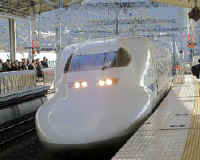 destination since only small hand luggage can be
carried on the Shinkansen. The train is comfortable, roomy and, obviously, fast.
destination since only small hand luggage can be
carried on the Shinkansen. The train is comfortable, roomy and, obviously, fast.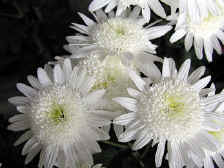 school children of all ages were everywhere, on the extensive
grounds, in the museum, lined up at buses, eating picnic lunches. The museum interior was
almost filled to capacity, but visitors, mostly students with their teachers, moved in an
orderly fashion and were very interested in the displays, which graphically and
effectively described in pictures and text the horror of the atomic blast and aftermath.
Displays also told about the course of the war, with some mention of the Japanese role and
too little comment on the origins.
school children of all ages were everywhere, on the extensive
grounds, in the museum, lined up at buses, eating picnic lunches. The museum interior was
almost filled to capacity, but visitors, mostly students with their teachers, moved in an
orderly fashion and were very interested in the displays, which graphically and
effectively described in pictures and text the horror of the atomic blast and aftermath.
Displays also told about the course of the war, with some mention of the Japanese role and
too little comment on the origins.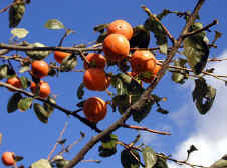 the gathering darkness to walk out on the famous
pine-covered spit. We gave it up and walked on the beach back to the hotel. In retrospect,
I suspect that the aura that surrounds Amanohashidate is more historical and cultural than
scenic. As for the famous view of the spit, I learned later that the beauty of
Amanohashidate is best appreciated from a hillside that overlooks the spit and sea.
Painted red footprints on a flat stone identify the precise spot for the best view. Next
time.
the gathering darkness to walk out on the famous
pine-covered spit. We gave it up and walked on the beach back to the hotel. In retrospect,
I suspect that the aura that surrounds Amanohashidate is more historical and cultural than
scenic. As for the famous view of the spit, I learned later that the beauty of
Amanohashidate is best appreciated from a hillside that overlooks the spit and sea.
Painted red footprints on a flat stone identify the precise spot for the best view. Next
time.